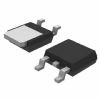NCV1009: Features: • 0.2% Initial Tolerance Max.• Guaranteed Temperature Stability• Maximum 0.6 W Dynamic Impedance• Wide Operating Current Range• Directly Interchangeable with ...
floor Price/Ceiling Price
- Part Number:
- NCV1009
- Supply Ability:
- 5000
Price Break
- Qty
- 1~5000
- Unit Price
- Negotiable
- Processing time
- 15 Days
SeekIC Buyer Protection PLUS - newly updated for 2013!
- Escrow Protection.
- Guaranteed refunds.
- Secure payments.
- Learn more >>
Month Sales
268 Transactions
Payment Methods
All payment methods are secure and covered by SeekIC Buyer Protection PLUS.

 NCV1009 Data Sheet
NCV1009 Data Sheet







